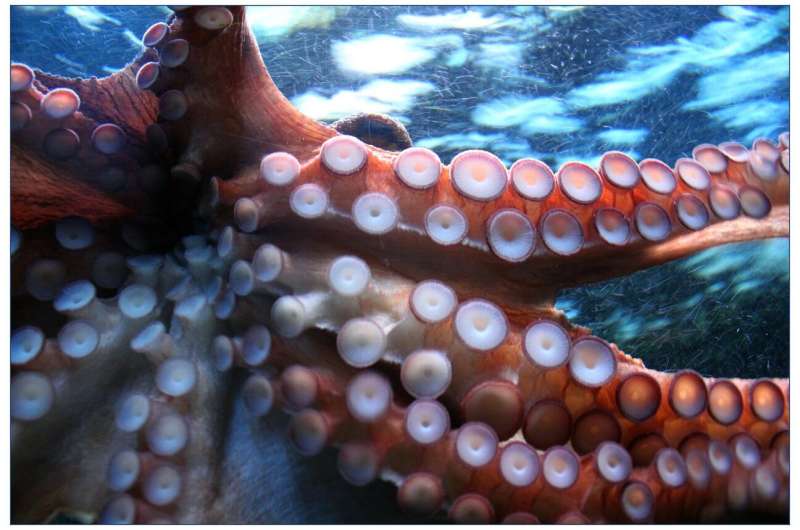Researchers have developed a groundbreaking adhesive inspired by the extraordinary abilities of the octopus, capable of strong attachment and controlled release on a wide range of underwater surfaces. This innovation could have far-reaching applications in fields such as healthcare, underwater robotics, and infrastructure repair. The study, published in Advanced Science, provides insights into the fascinating mechanisms behind the octopus’s remarkable suction capabilities and how they can be replicated in synthetic adhesives.

Replicating the Octopus’s Underwater Grip
Nature has long been a source of inspiration for scientists and engineers, and the octopus is no exception. Researchers at Virginia Tech, led by Associate Professor Michael D. Bartlett, Ph.D., have taken a deep dive into understanding the intricate workings of the octopus’s suckers to develop a synthetic adhesive that can mimic its exceptional underwater performance.
By studying the exposed disc-like portion of the octopus’s suckers, known as the infundibulum, the team designed an elastic, curved stalk with a flexible membrane that can change shape to adhere to a wide range of surfaces, even in wet and submerged environments. The adhesive demonstrated the ability to strongly attach to complex objects, from lightweight shells to large rocks and soft gel beads, with varying degrees of roughness, curvature, and hardness.
Versatility and Controlled Release: The Key Advantages
One of the most impressive features of the octopus-inspired adhesive is its versatility. Underwater, the adhesive proved capable of attaching to a diverse array of objects, showcasing its ability to adapt to different surface characteristics. Additionally, the researchers were able to achieve rapid attachment and controlled release, allowing the adhesive to be quickly and repeatedly applied and removed from the target surfaces.
This level of adaptability and reversibility sets the octopus-inspired adhesive apart from traditional underwater adhesives, which often struggle to maintain a strong grip on complex or delicate substrates. The team’s findings suggest that this breakthrough could have significant implications for various industries, from healthcare and underwater robotics to infrastructure repair and maintenance.
Unlocking the Potential: Applications and Future Developments
The potential applications of the octopus-inspired adhesive are vast and exciting. In the field of healthcare, this adhesive could be used to develop advanced wound dressings, prosthetic attachments, or even medical devices that need to adhere securely in wet environments. In underwater robotics, the adhesive could enable the development of gripping mechanisms that can manipulate a wide range of objects with precision and control.
Beyond these applications, the researchers believe that the octopus-inspired adhesive could also find use in infrastructure repair, where it could be leveraged to quickly and effectively attach materials to challenging underwater surfaces, such as those found in dams, bridges, or coastal structures. As the team continues to refine and optimize the adhesive, we can expect to see even more innovative applications emerge, showcasing the power of biomimicry in solving real-world challenges.
